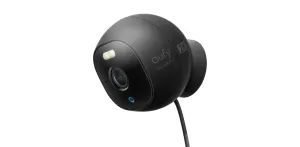Analog Vs. IP Cameras: How to Choose What's Best for Your Home Safety
If you've ever ventured down the home security rabbit hole, chances are you've stumbled upon a seemingly cryptic discussion centered around analog vs. IP cameras. It might sound like tech gibberish, and let's be honest, terms like 'IP' can make some of us think of internet protocols we last worried about when setting up our home Wi-Fi networks. But understanding the difference between these two types of security cameras is pretty essential, and hey, I promise it's not as complex as it sounds. Let’s embark on a little journey to demystify these terms. (safewise.com)
What's the Big Deal with IP and Analog Cameras Anyway?
The core of the debate between analog and IP cameras often boils down to the quality of the video, the cost, and how they're set up in your home. To put it simply, analog cameras are the old-school types you might associate with grainy CCTV footage from an '80s movie. IP cameras, on the other hand, are the newer kids on the block, often boasting clearer images and advanced tech perks. If you're looking to get familiar with the modern standard, check out IP security cameras for home.
Understanding Analog Security Cameras
Analog cameras operate using standard coaxial cables—yes, the same kind of cable used for your traditional cable TV (before everything went digital and started streaming). They record images and then send this footage over the cable to a DVR (Digital Video Recorder), which then processes the video data, compresses it, and stores it.
- Cost-Effective: Analog setups are generally cheaper, both in terms of the initial hardware and installation.
- Wider Coverage: Because they're less expensive, it's financially feasible to cover more ground in your home.
- Simpler Technology: Less that can go wrong, tech-wise, which is excellent for those of us who aren't super tech-savvy.
But a major drawback is the quality. Analog video quality caps out at around 0.4 megapixels, which, let's face it, isn't going to do much if you're trying to identify the cheeky raccoon rummaging through your trash at night.
Diving into IP Cameras
IP cameras, or Internet Protocol cameras, take a different approach. They convert the video footage into data right at the camera before sending it over to either a Network Video Recorder (NVR) or storing it on a cloud-based service. This method allows for higher resolution footage.
- Higher Quality Video: IP cameras can go up to 5 megapixels and beyond, providing much clearer and detailed images.
- Scalability: It’s easier to add more cameras to your network as IP cameras don’t require a home-run cable back to a recording device.
- Advanced Features: Many IP cameras come with extra features like facial recognition, motion tracking, and integration with your home’s IoT ecosystem.
For anyone upgrading from older systems, here's a great resource on what to expect when upgrading from analog to IP.
However, with a higher quality comes a higher price tag, both for the cameras and for the installation, especially if your home isn't already equipped with a suitable network infrastructure. (pelco.com)
Installation and Setup: Not as Daunting as it Sounds
Okay, I'll admit that the installation part was what I worried about the most. When I decided to dip my toes into securing my own house, the thought of drilling holes and running cables through walls was almost a deal-breaker. I consider myself pretty handy, but messing with electrical setups felt out of my league.
In the end, choosing between an analog and an IP system might come down to your comfort with either calling in a professional or tackling a weekend project that might require more than just basic DIY skills.
- Analog Cameras: Installation can be less intimidating because it's just about mounting the cameras and running coaxial cables. A friend and I managed to set ours up with just a little bit of internet research and a lot of patience.
- IP Cameras: These might require a bit more tech savvy, especially if you're setting up a network yourself. But many modern IP cameras come with helpful guides and customer support that can assist you (or at least, make the process less painful). (safewise.com)
Many models now offer Wi-Fi support, so if you're leaning wireless, here's a helpful guide on connecting wireless security cameras to Wi-Fi.
So, Which Should You Choose?
Choosing between an analog and an IP camera system doesn't have to be a tech nightmare. Consider your budget, the quality of video you’re aiming for, and how tech-savvy you feel about installation.
- Do you need crystal clear images where you can potentially identify faces, license plates, or other details? IP cameras might be the way to go.
- Are you more concerned about wider coverage and staying within a budget? Then analog could be your best friend.
If you're somewhere in between, you might also explore hybrid systems or other camera types, like turret cameras that offer a nice blend of clarity and coverage.
Final Thoughts: Safety First, Tech Second
Regardless of your choice, remember that the goal of any home security system is to provide safety and peace of mind. Whether you opt for analog or IP, each system has its strengths suitable for different needs and situations. And hey, if you're like me and accidentally install something upside down, there's always a way to fix it—just requires a little elbow grease and perhaps a renewed appreciation for those installation manuals!
What’s your experience with setting up home security? Any tips or stories you’d like to share? Feel free to drop me a line. Stay safe and secure out there!





